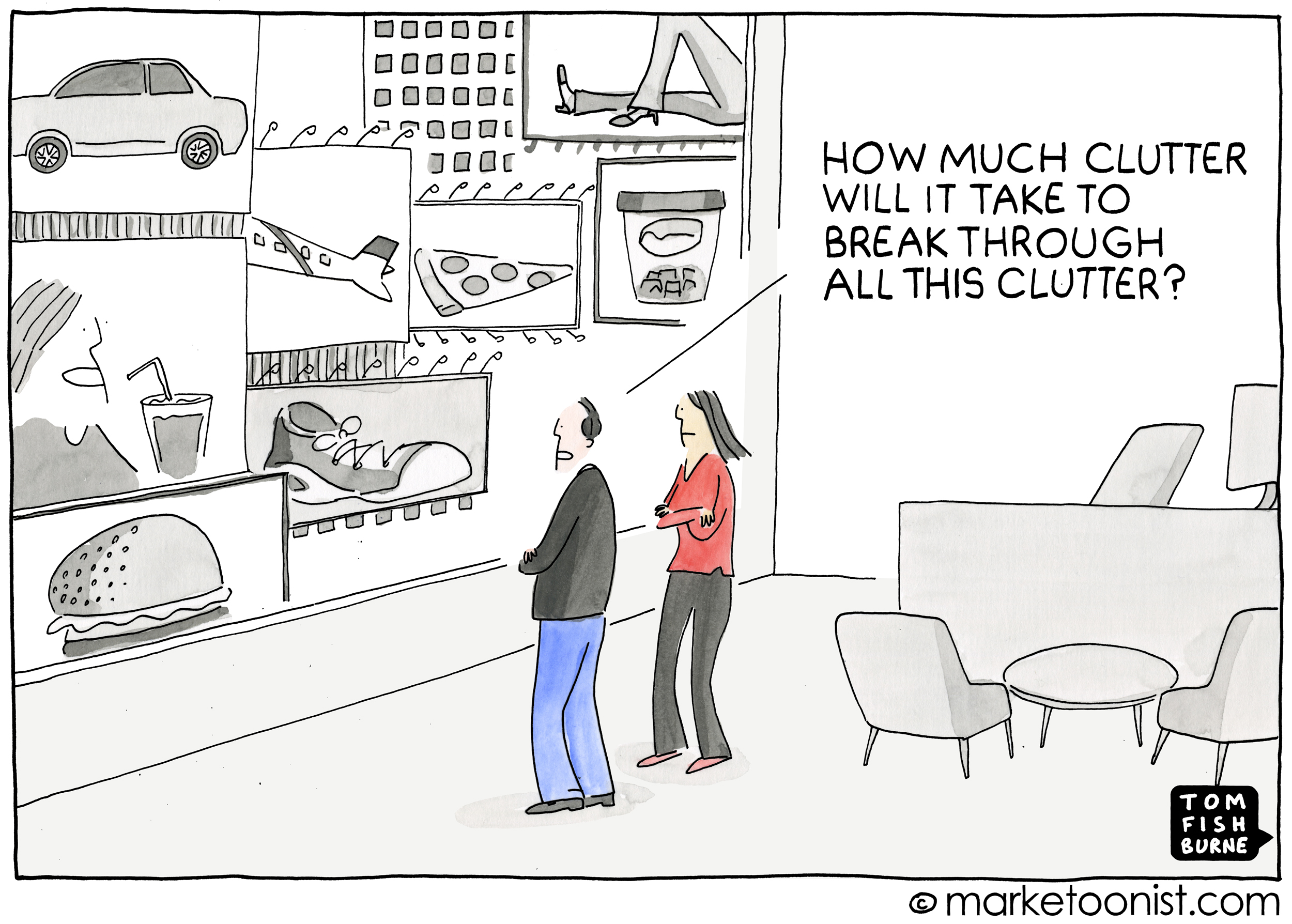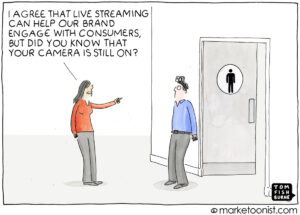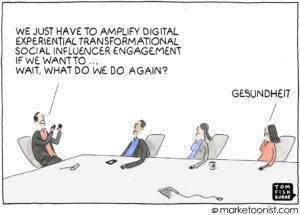Advertising can’t break through the clutter by adding to it. Yet marketers often treat media as an arms race. With the rise of digital, marketers have never had more tools in their arsenal. Getting consumer attention is often referred to as “capturing eyeballs” as if impressions are the only goal.
At the same time, consumers have never had more power to tune out whatever marketers try to pitch them. A few weeks ago, I wrote about the handwringing on the rise of ad blockers. Yet, consumer resistance to advertising clutter is nothing new. It’s just that that traditional media channels (TV, radio, print, and outdoor) were largely unblockable.
A few years ago, J. Walter Smith famously estimated that consumers were exposed to 500 marketing messages a day in the 70s and 5,000 a day today. I like his synopsis on the implications of advertising clutter:
“Advertising clutter is the single biggest problem with marketing. Not just today, but as long as advertising has been around. People are annoyed by ads that show up in unfamiliar places, but become used to them over time. So marketers respond by finding even more unfamiliar places. It’s cumulative and it’s getting worse…
“If we really want to do good marketing, then we have to get out of the clutter business and stay solidly in the communications business.
“It’s tempting to try and address our challenges by adding more weight to our media buys, but this only raises the cost of doing advertising, and it never goes down in this arms race. We wind up in a place where it costs ever more to get the same old — and sometimes declining — response. Clutter is a fundamental problem for us.”
No matter what happens with ad blockers, I like the idea of getting out of the “clutter business”. I’d love to hear your thoughts.



Simon Rees says
Also, it reminds me of the billboard above a suburban motorway: “You are not in traffic – you ARE traffic”.
It’s a great example of the tragedy of the commons, isn’t it, Tom? Like with the commons, it’s not in the interests of any individual to reduce the clutter that they create on a given channel – unless somehow substituting quality for quantity would work? On that, maybe the way to stand out is to spend much more of the budget on producing beautiful / interesting / educational (i.e. valuable) content, and less on placing it everybloodywhere.
Michael Kyritsis says
To get your message across you need to entice people to read on. Traditionally that was with an attention-grabbing headline, now, on Facebook, it’s the clichéd “and you’ll never guess what happened next…”. Those attention-grabbing one-liners have to be thrown out there with a scatter-gun approach.
Jack McCullough says
I agree with Simon, a lousy message seen 50,000 times is still a lousy message. Great creative is memorable, and clients who understand that win.
David Sprogis says
As a consumer, I am not only irritated by the noise but I grow fatigued by the volume and disgusted by bad messaging. Regarding volume, my household typically watches Netflix but recently watched broadcast news related to the Paris bombings. I was re-astonished by the volume of ads and ask myself how the general public is truly able to suffer it. Regarding bad messaging, one of the ads was for the Dodge Challenger / Mockingjay. I struggled to put Challenger and Mockingjay together in my mind – the notion of a “challenger” was too weak to carry the connection for me, especially when one considers the apocalyptic setting of The Hunger Games, desperately poor people trying to survive – where does an automobile fit into that environment? Furthermore, the messaging seemed inconsistent with the target audience, motorheads. As a motorhead in my youth, I wanted to know things like displacement, torque, and power curve. I did not care about some metaphorical “spark”. Sadly, Dodge is not alone in trying to connect other brands rather than building their own brand.
Jacques Lehodey says
Clutter is an issue? Really? Clutter has ALWAYS been an issue. The answer is simple to state but difficult to execute. The right target at the right time with thee right message the right number of times. That is why you have a Media agency and that is why you need people on the agency side that are more than 35 so the same questions are not asked over and over.